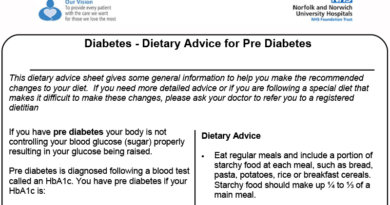What the US eats

This post goes hand in hand with this one on UK food intake. I’ve looked at UK and US food intake separately – and made some comments below on what can or can’t be compared…
The US food intake data can be found here. We can’t compare like with like between the UK and US because the methodology is different and so are the items recorded.
As regards the methodology, UK data are based on self-reported consumption and the US data are reported as: i) food availability and ii) loss-adjusted food availability. “The loss-adjusted food availability data are derived from the food availability data by adjusting for food spoilage, plate waste, and other losses to more closely approximate per capita consumption.” Comparing UK reported consumption and US estimated consumption (loss-adjusted) is a reasonable starting point, but that still leaves the difference in the items recorded. The US reports ingredients (wheat, sugar, oils) rather than foods (bread, biscuits, processed vegetables), so some single items can be compared (eggs, fruit, for example), but most line entries can’t be compared. It is still interesting to see the broad US categories and I’ve tried to add interesting detail where available.
You can see from the full data set on the link that the loss-adjusted availability is reported at quite a top level. If you look at “calories” under the “Loss-Adjusted Food Availability” sub heading, you can see food intakes from 1970 to 2014 for the following categories: Meat, eggs and nuts; Dairy products; Fruit; Vegetables; Flour and cereal products; Added fats and oils (includes dairy fats); and Sugar and sweeteners (added).
Closer examination of the data reveals two complications:
1) In the year 2000, the number of firms reporting vegetable oil production to the Census Bureau increased and this resulted in a really obvious jump in the “added fats and oils” category. This must be taken into account if looking at trends. But we are just going to look at what US people typically eat currently, so this issue is not a problem for us in this note.
2) From 2010 onwards, rice disappeared from the grains category due to reporting issues. This does affect us, so it will be safest to take 2010 as the year for which we assess what the US eats. (The other categories barely changed between 2010 and 2014, so we can consider the 2010 data an accurate picture of what the US average citizen is currently consuming).
There are individual spreadsheets, with multiple worksheets, for the listed categories: Meat, eggs and nuts; Dairy products; Fruit; Vegetables; Flour and cereal products; Added fats and oils; and Sugar and sweeteners. I’ve analysed each worksheet in each spreadsheet to extract the foods that account for almost all of the calories in each category (there are some very small items – e.g. eggnog and condensed milk in dairy are tiny – these miscellaneous items make up the total in each category.)
| All Food (average per person per day) | Kcal | As % of diet |
| Meat, eggs & nuts | 525 | 21.2% |
| – Red meat | 247 | |
| – Poultry | 156 | |
| – Fish | 14 | |
| – Eggs | 37 | |
| – Tree nuts | 23 | |
| – Peanuts | 44 | |
| Dairy products | 221 | 8.9% |
| – Fluid milks | 83 | |
| – Cheese | 96 | |
| – Frozen dairy | 36 | |
| Fruit | 81 | 3.3% |
| Vegetables | 126 | 5.1% |
| Flour & cereal products | 581 | 23.4% |
| – All wheat | 406 | |
| – All corn | 104 | |
| – All rice | 54 | |
| Added fats, oils & dairy fats | 575 | 23.2% |
| – Salad & cooking oils | 402 | |
| – Shortening & margarine | 102 | |
| – Butter (27) & Dairy fats (13) | 40 | |
| – Lard & Tallow | 18 | |
| Sugar & sweeteners | 373 | 15.0% |
| – Corn sweeteners (including HFCS) | 184 | |
| – Cane & beet sugar | 183 | |
| TOTAL | 2,481 | 100.0% |
Some observations on the US intake
* The average US calorie intake per day is estimated to be 564 calories higher than that in the UK. This doesn’t make sense and confirms the suspicion that UK consumption is highly likely to be under-reported. (US consumption may also have been inadequately loss-adjusted).
* All US categories contain processed food (e.g. frozen dairy includes ice-cream; fluid milk contains flavoured milkshakes) and some are entirely processed food (i.e. sugar & sweeteners).
* Approximately 60% of the US diet is made up of the three baddies: sugar; flour/grains and oils. These are nutritionally poor or useless. As with the UK, if sugar/caloric sweeteners alone could be cut from the diet, that would eliminate 15% of useless intake immediately. More importantly, that added sweetness will be appearing in all the other categories from chocolate milk to breaded fish to chicken nuggets to cereals, cookies and cakes. Hence, attacking sugar consumption would have a significant impact on all processed food intake.
* Consumption of the most nutritious foods (fish, eggs, fresh vegetables, real milk etc) is tiny.
* As with the UK, butter consumption is tiny (27 calories per person per day) – tell that to the next person who claims that butter has made us fat!
The bottom line
The dietary intake, of the average UK and US person, is pretty dreadful. We are not eating enough natural food. We are basing our meals on starchy foods, as we have been told to do. The US particularly has embraced the vegetable oils, which have been promoted. Our ratio of processed to real food, overall, is shocking, but then it has been encouraged with the demonization of fat (found naturally in real food) and the concomitant development of low-fat-high-carb alternatives.
It’s no wonder that the average person sat next to us on the train, or in the cinema, looks unhealthy and likely suffers from TATT (Tired All The Time). They’re probably munching on something, to try to ‘boost their energy’, which is the ultimate irony of all this – we’re over-fed and under-nourished.





What the USDA availability data concluded is more important.
https://www.ers.usda.gov/data-products/food-availability-per-capita-data-system/summary-findings/
They concluded that Americans are consuming more calories per day than they were 40 years ago.
They concluded an increase in mean, daily, total energy intake, per person.
In 1970, Americans consumed an estimated 2,039 calories to 2536 calories in 2010.
Of this 497-calorie increase, added fats and oils accounted for 225 calories; dairy, 27 calories; meat, eggs and nuts, 19 calories.
They show that over 50% of the increased daily calories were ‘mostly’ coming from the fat from oils and fat from animals.
The calories are not coming from more starch.
Authority recommending starch is different from people following the advice.
The fruit and vegetables accounted for only 10 calories; added sugar & sweetners, 34 calories.
So why announce on the BBC ‘lard is fine’ if oil is useless and nutritionally poor.
How more nutritionally poor can you go.
http://nutritiondata.self.com/facts/fats-and-oils/483/2
Hi Matthew
Check out the definition of “fine” vs. “nutritious.”
Best wishes – Zoe
So do you think it’s better to tell the public, ‘lard is fine’ than ‘lard is nutritionally poor’ as a nutritionist.
“Is that average person sat next to us on the train, or in the cinema, looking unhealthy and suffering from TATT probably munching on something, to try to ‘boost their energy’, which is the ultimate irony of all this – we’re over-fed and under-nourished.”
Why make the proposal of ‘eat unlimited pork’ on the BBC if people being over-fed concerns you Zoe.
Are you missing the point on purpose or do you have a product to sell?
Genuinely concerned!
Have you personally tried eating in such a way as described?
With 60% of the US diet made up of sugar; flour/grains and oils, isn’t it plant based?
Indeed!